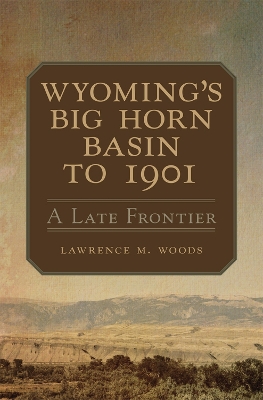Western Lands and Waters
2 total works
This new work for the first time relates the life of Alex Swan, and offers a complete history of the Swan companies. Lawrence M. Woods has combed the surviving corporate records and other documents held in the United States and abroad.
At the height of his financial life, Swan was said to be the richest man in Wyoming Territory, and his influence extended beyond business affairs to community service, both in Wyoming and in Iowa. Yet, after his dramatic financial collapse, there were many who ridiculed what he had done, and Swan's silence has left those criticisms on the record, without rebuttal.
Swan, a leader in the Wyoming Stock Growers Association from its founding in 1873, served as its second president. Promoting the use of Hereford cattle on the high plains, he was a force in the Wyoming ranching world, especially after his move to Cheyenne in 1874. Woods details Swan's life in the years after his separation from the Scottish-controlled Swan Land and Cattle Company, especially his activities in Ogden, Utah.
The Swan companies continued operation into the mid-twentieth century. John Clay played a major role in their operation, and he figures prominently in their story. Alex Swan and the Swan Companies is an important portrait of the inner workings of the western cattle industry and its leaders.
The book has a bibliography, index, and three appendices. It is bound in rich brown linen cloth and has a foil stamped spine and front cover. Western Lands and Waters Series, XXII.
Isolated by Indian lands and impassable natural barriers, the Big Horn Basin remained a frontier for years after the frontier faded from other Western regions. The Indian Treaties of 1868 had left the Basin effectively encircled by Crow, Sioux, and Shoshoni Indians. The Yellowstone cordillera, Big Horn River and Wind River cut off travel on the west, east and south. Secluded and remote, the Big Horn Basin attracted only the most rugged and foolhardy, giving it a history distinct in the American saga.
Trail breakers, fur traders and gold seekers, the first to open the Basin to settlement, are each highlighted. The efforts of Jedediah Smith, Charles Kemble, William Gordon, Robert Campbell, William Ashley and others were the first to blaze routes into the Basin for fur trade. There is much information on military expeditions and Indian encounters led by the likes of Lt. John Mullins, Lt. Henry E. Maynadier and Capt. William F. Reynolds, and Col. Nelson A. Miles. James Bridger, Edward Shelly, and the Expedition of 1870 figure prominently. The adventures of various prospectors are included.
Stock growing entrepreneurs and alliances receive prime attention in this study. The disastrous winter of 1886-1887 and the Johnson County Invasion are described at length. Cattlemen Mason and Lovell, Torrey, and a great many others are discussed in a sweeping roster of who's who.
Horse and cattle thieves, robbers and outlaws are discussed, including Hank Gorman, Charles and Ed Anderson, and Albert Nard. The lawmen who brought justice to Wyoming are also heralded here: Thomas R. Adams, Ed Lloyd, and Walter W. Peay among others.
The railroad through the Big Horn Basin and its impact on a once impenetrable frontier are spotlighted. The importance of the Hill Line, Toluca Line, Lower Hanover Canal Project, and Wind River Canyon Dam are all brought to light.
Water appropriation, the Carey Act, and other development, immigration and settlement projects-including Mormon settlements-are all addressed by Woods. Governor William Alford Richards, W. S. Collins, and W.D. Pickett's contributions are chronicled.

